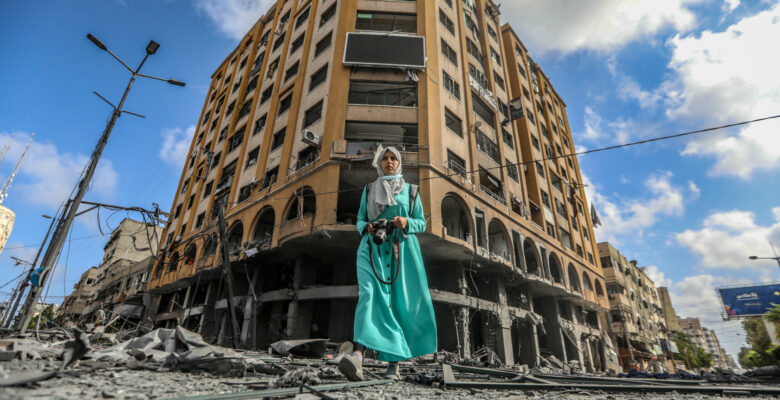I used to live in Gaza. Though this was some years ago, I clearly remember much about the Gazans I met, and have stayed in touch with many. Nine days ago, when this horror erupted, I did something I rarely indulge in, and posted an opinion on facebook. I wrote briefly about the murderous Hamas attacks, and about my fears for Gaza under Israeli retaliations led by its corrupt, vengeful leaders.
One of my old friends from Gaza immediately called me out; she was sick, she said, of people like me writing ‘bothside-isms’ that claim everyone is suffering equally and that balance matters. She’s right about me. I’ve spent most of my career working in peacebuilding; bothside-ism is wired into my DNA. But her point made me feel uncomfortable beyond that – because of what is not being said about Gaza.
Let me take you into the Gaza Strip for a moment: I lived in Gaza city centre, in a crowded, friendly district called Al-Rimal. My flat was almost opposite Al-Azha University, ten minutes walk from the Mediterranean Sea. I am sure both my old flat and the university have been bombed by the Israeli military – the majority of Al-Rimal is now rubble. Thousands of people who already count themselves as refugees have lost their homes again.
Two main road routes run North to South of the Strip. One route follows the coastline, and the other, Salah al-Din road, runs inland, from Beit Hanoun in the North, to the southern town of Rafah, where Gaza borders Egypt. The Israeli Defence Force (IDF) claimed both these routes were ‘safe’ for the more than one million Gazans they ordered to flee South on Friday 13th October.
Later that same day, after ordering Gazans to flee, the IDF bombed Salah al-Din road, killing approximately seventy Gazans. Let’s pause there for a moment; people fleeing on masse to save their own lives being bombed en route by the same military who ordered them to abandon their homes.
Jan Egland, a senior former diplomat who now heads the Norwegian Refugee Council, cites international humanitarian law (IHL) when he states that what Israel is doing is not ordering an evacuation – it is forcibly transfering a population. Under IHL this is a war crime. Israel is also depriving Gazan civilians of food, water and medicine. Gazans hospital staff say forcing critically ill or injured patients from hospitals constitues their death sentence.
Over the last nine days our airwaves have been filled with International leaders (Anthony Blinken, António Guterres etc etc) repeating the mantra that Israel has the right to defend itself. All over the West, Presidents and PMs have echoed this right of Israel to self-defence. I’m not disputing that right, nor the gravity of what Hamas unleashed inside Israel – this was a clear and sickening war crime.
My question is this: why is the protection of Palestinian civilians in this war an add-on, a footnote to the Israeli military? In the case of Rishi Sunak, it sounded like a throw-away comment, superseded only by the stupidity and callousness of Defence Minister Grant Shapps.
I have not heard a single leader speak about the right of Palestine to self-defence, or the right of Gazans to defend themselves from the military retaliations of the IDF.
We risk forgetting the most basic facts about this ‘war’. Israel is occupying Palestine through a military regime that is now intent on depriving 2.3 milion people their basic human rights. If you want more information, go to the Israeli Human Rights Network, B’Tselem.
When Israel re-invades Gaza in the next couple of days, I am sure thousands of Gazans will die. I hope I am wrong but I really fear I’m not. Leaders need to speak up now – I mean exert real political pressure on the Israeli goverment – or they give Netanyahu and his cabinet free rein to slaughter Gazan civilians en masse.
Ten of thousands of Gazans have fled North and Central parts of the Strip for the South. But many others are determined to stay. Like Mahoud Shalabi, an aid worker for Medical Aid for Palestinians (MAP) who says “My existance in this home, in the piece of land right now is a form of public resistance and I will do my best to remain here. I am afraid we will not survive, but I hope I die in dignity.”
I used to do some work for MAP inside Gaza, and I hope to see Mahmoud and his colleagues in Gaza city afterwards. If they are still alive.
(The image is by Gazan photographer Mohammed Zaanoun; I used it in May 2021, during Israel’s last military assault on Gaza. Tragically, it seems very apt again).

